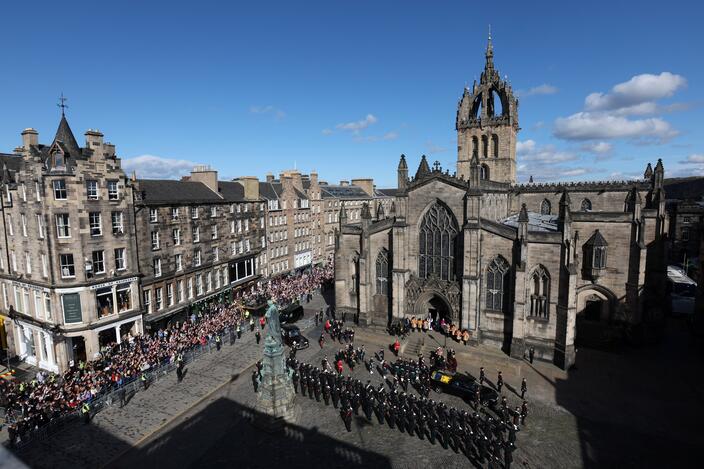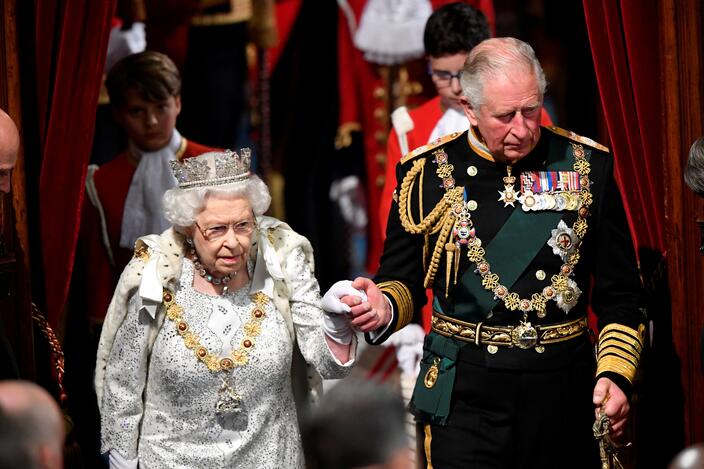Photo: © Jane Barlow/Pool via REUTERS
Elizabeth II passed away 8 September. According to British tradition, she will be buried on the tenth day after her death. With the departure of the queen, an entire era ended, and the whole of Great Britain plunged into deep mourning. In the material REN TV we will tell you how the ceremony will take place and who will come to see the queen on her last journey.
When will the ceremony take place
Funeral of Elizabeth II will pass On September 19 at 11:00 London time, at exactly noon, there will be a minute of silence. The body of the monarch will be delivered to London by royal train or plane on September 18. Two funeral processions will be organized at once – in London and Windsor.
The funeral will take place in Westminster Abbey – it was there that the British monarchs were crowned, and in 1947 the queen herself married Prince Philip. Heads of state from all over the world have been invited to the funeral ceremony, and the service will be broadcast on television.
Queen Elizabeth will rest in the chapel of her father King George VI, where her mother and sister are buried. The body will be taken to the crypt to the sounds of the anthem “God Save the Queen”, and only after that the symbols of power will be removed from the coffin: the crown, scepter and orb. For relatives of Elizabeth II, a private ceremony will take place, during which they can once again say goodbye to her.
As a sign of mourning in the capital, the bells of St. Paul’s Cathedral and Westminster Cathedral will ring. And in Hyde Park in London and Edinburgh Castle in Scotland gun salutes will thunder – each shot symbolizes a year of the Queen’s life.
Funeral events
After the death of the Queen, all of Britain and more than 50 countries of the British Commonwealth plunged into deep mourning. State flags have been flown at half mast in all cities, major sporting events have been cancelled, and many TV channels have changed their broadcast schedule. National mourning will last 10 days, until the funeral of Elizabeth.

According to British traditions, the plan of mourning ceremonies in the event of the death of the monarch is signed in advance. Funerals are held seven or ten days after the death of a king or queen. During this time, the subjects say goodbye to the deceased monarch and see him off on his last journey.
The coffin with the body of Elizabeth will be transported on a special vehicle, a gun carriage, to the sounds of an orchestra. The procession will be accompanied by guardsmen.
Requirements for invitees
The leaders of countries from all over the world will come to see the queen on her last journey. However, the British authorities decided not to invite delegations from Russia, Belarus and Myanmar to the funeral. About 500 guests will attend the farewell to the monarch on September 19. King Charles III will receive them at Buckingham Palace the day before the funeral ceremony.
Invited can’t to come to the country by private transport and will need to use commercial flights. This is due to the fact that there will be a lot of visitors at the event, and there may not be enough parking spaces.
Only world leaders and their spouses will be able to attend Elizabeth’s funeral at Westminster Abbey. After the memorial service, they will leave notes in the condolence book at Lancaster House to honor the memory of the departed Queen. All participants are required to wear black, and members of the royal family will be required to wear mourning bandages.
Recall that Queen Elizabeth II died on September 8 at the age of 96. The new king of Great Britain was her eldest son, Prince Charles, who took the name Charles III.

Operation London Bridge
The UK is a country with a long history of monarchy. And, of course, the authorities have a clear plan action in the event of the death of a king or queen. The operation was called “London Bridge”, the plan was developed back in the 1960s, but was constantly updated.
According to tradition, Her Majesty’s Private Secretary must inform the Prime Minister and the Privy Council of the death of the monarch with the code phrase “London Bridge has collapsed.” After that, the Foreign Office announces what happened to the countries of the British Commonwealth.
Then flags should be half-mast in the center of London and a minute of silence should be declared. On the same day, the prime minister holds a meeting with the new monarch, after which the king should address the nation. The next day, the heir officially becomes the new ruler of Britain.
On the second day after the death of the queen, the coffin should be delivered to Buckingham Palace. On the third day, the new monarch receives condolences from parliamentarians, and then goes to funeral tour across the UK, starting with Scotland. There he will accept condolences from local MPs and attend a service at St. Egidius’ Cathedral in Edinburgh.
According to the plan, a rehearsal for the delivery of the Queen’s coffin to the Palace of Westminster is held the next day. The ceremony itself will take place only on the sixth day after the death of the monarch. And then the operation, code-named “Feather”, will begin – the coffin will be in a hearse at the Palace of Westminster for three days. During this time, the public will be able to say goodbye to the Queen.
On the eighth day, the new king will travel to Wales to attend a service at Llandaff Cathedral in Cardiff and accept the condolences of local MPs. The Queen’s funeral will take place on the tenth day. The mourning will last throughout the country for exactly one month. At this time, the ceremonial portrait of the queen with a mourning black ribbon will be hung in the city halls, and after that it will be replaced with the image of the new king – Charles III.
Source: Ren.tv
Ashley Fitzgerald is an accomplished journalist in the field of technology. She currently works as a writer at 24 news breaker. With a deep understanding of the latest technology developments, Ashley’s writing provides readers with insightful analysis and unique perspectives on the industry.
